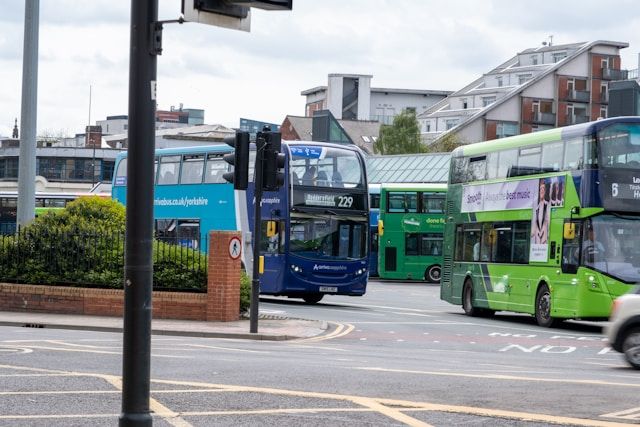TfL Streetspace judicial review: lessons for transport planners and engineers
The High Court upheld a judicial review brought by the London taxi trade against TfL's Streetspace Plan.

Update: On 16 June 2021 the Court of Appeal upheld Transport for London’s appeal against the earlier findings of the High Court. The full judgement will be delivered in due course, and once this is available we will publish an updated analysis.
On 20 January 2021, the High Court upheld a judicial review brought by the London taxi trade against Transport for London’s (TfL’s) Streetspace Plan and a specific scheme on Bishopsgate. Whilst TfL plan to appeal, the judgement,1 it is essential reading as it highlights pitfalls to avoid when developing street schemes, including those delivered under the Active Travel Fund outside London.
We have reviewed the judgement and identified three key takeaways for transport planners and engineers. Please note that this article does not constitute legal advice.
Equality Impact Assessments (EqIAs)
The judgement held that TfL did not have proper regard for the public sector equality duty (PSED). Although an EqIA was completed for the Bishopsgate scheme, the judgement found that:
…the EqIA did not meet the required standard of a “rigorous” and “conscientious” assessment, conducted with an open mind. The mitigation entries (save for impact 13), and the implementation/explanation entries were perfunctory or non-existent and failed to grapple with the serious negative impacts and high level of residual risks which emerged from the assessment. The residual risk assessment was inconsistent and irrationally understated the risks. Most worryingly of all, the EqIA read as if its purpose was to justify the decision already taken.2
This highlights the importance of ensuring that EqIAs (and considering equalities implications) are an integral part of scheme development, no matter how pressing implementation timescales are. EqIAs should be used to genuinely inform the design process based on evidence-based consideration of impacts. This has been the approach that Steer applies on EqIAs that we develop for our clients, with a disability group commenting that they ‘would like to hold [one of Steer’s EqIAs] up as good practice’.
Considering all users
Many of the judicial review grounds that were upheld relate to inadequate documentation of how impacts on taxis (and their passengers) were considered during the decision-making process, and how relevant policies informed such decisions. The general lesson is to make sure that all design decisions taken (and the reasons and evidence behind them) are documented contemporaneously, making it clear how the needs of all modes and users have been considered and how relevant policies have been taken into account.
Network Management Duty (NMD)
The Network Management Duty (NMD) requires highway authorities to ‘secure the expeditious, convenient and safe movement of vehicular and other traffic (including pedestrians)’.3 The judgement is a useful reminder that for the purposes of the NMD ‘traffic’ does not just include vehicles but also pedestrians. Further, the NMD is not absolute but needs to be balanced against other factors, including amenity. Quoting an earlier judgement, the way in which the NMD is interpreted by the courts is set out below:
It seems to me that on the current state of the authorities, the position with section 122 is as follows:
(i) The duty in section 122(1) when exercising functions conferred by the Act to secure the expeditious, convenient and safe movement of traffic extends not only to vehicles but includes pedestrians;
(ii) The duty of securing the expeditious, convenient and safe movement of traffic is not given primacy but is a qualified duty which has to be read with the factors in section 122(2), such as the effect on the amenities of the area and, in the context of making a traffic regulation order, with the purposes for this identified in section 1(1) of the Act;
(iii) The issue is whether in substance the section 122 duty has been performed and what has been called the balancing exercise conducted, not whether section 122 is expressly mentioned or expressly considered;
(iv) In the particular circumstances of a case compliance with the section 122 duty may be evident from the decision itself.4
What is the way forward?
The longer-term implications of this judicial review will depend on the outcome of any appeal, and it does not appear that any schemes will need to be immediately removed. Nevertheless, this is a timely reminder for all transport planners and engineers to consider and document such issues when developing future street schemes and that now is an opportune moment to review the documentation for existing schemes.
__________________________


















